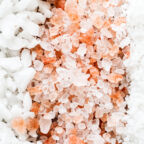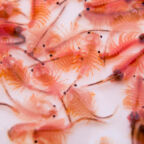
SALT LAKE
It is the second largest and shallowest lake in Turkey in terms of surface area. It is located at the intersection of the borders of Ankara, Konya and Aksaray provinces in the Central Anatolia Region. 40% of Turkey's salt need is supplied from this lake. It is 905 meters above sea level and its maximum dimensions are 80 kilometers from north to south and 60 kilometers from east to west. It holds around 3,000,000 population strength.
Salt Lake, with a precipitation area of 11,900 km², is a closed basin lake with no outflow. Despite the width of the precipitation area, the nutritional resources are weak. The streams that bring water to the lake are the streams whose waters decrease in the summer or dry up completely. These are Peçenek Stream coming from Şereflikoçhisar, Melendiz Stream coming from Aksaray, İnsuyu, Karasu and Kırkdelik Streams coming from the south and west.
The average water level of the lake is around 40 cm, and in May, when precipitation increases, it is approximately 110 cm. In August, the lake dries up to a large extent. The high salt content causes salt sedimentation of 10-30 cm, which is renewed every year in most of the lake area as a result of evaporation. Towards the end of summer, it is possible to walk between the Kaldirim Saltpan and the opposite shore. In this season, the salinity rate reaches a remarkable 329 per thousand. In terms of chemical composition, there is a saltiness in the character of kitchen salt (sodium chloride) and the sodium chloride ratio is higher than the magnesium chloride and sodium sulfate ratios.
Salt accumulation in the lake is due to various factors. The presence of the Oligocene formation containing gypsum and salt layers in the surrounding played an important role in the salinization of the lake. However, it has been determined that salty waters come from the sources at the bottom of the lake. The shallowness of the lake and the intense evaporation are other factors of salt deposition. The salt layer deposited as a result of evaporation in the summer is excavated by machinery and collected in salt pans. These saltworks, called Yavşan Saltworks in Cihanbeyli, and Kaldirim and Kayacık Saltworks in Şereflikoçhisar, were privatized in 2005, while they were operated by Tekel. Salt factories that wash and grind the salt obtained from Tuz Gölü form the backbone of the economy of Cihanbeyli and Şereflikoçhisar. Salt Lake and its surroundings were declared a special protection area in 2001. Salt Lake and its surroundings are the main breeding areas of flamingo colonies called Phoenicopterus rubber. It is also the second largest breeding center of the Sakarca goose called “Anser albifrons”.
The vast water area covered in winter constitutes an important wintering area for waterfowl. In addition to flamingo, apocalypse, stubble and similar birds that have adapted to salty environments, plovers, cranes, wild geese and wild ducks live in large groups in the lake. Due to the relatively desolate surroundings of the lake, birds can easily feed in the surrounding puddles, pastures and cultivated areas, and swim in the unfrozen lake waters even in the coldest days of winter. The islands and swamps formed in the lake in spring include Swamp Swamp (Glareola prantincola), Suna (Tadorna tadorna), Angıt (Tadorna ferruginea), Teal (Anas crecca), Kılıçgaga (Recurvirostra avocetta), Bigeye (Burhinus oedicnemus Larus) and sp. ) allows them to incubate. There are salty steppes and ecologically sensitive plant communities consisting of endemic species in the region. Salt Lake, which is an ecosystem integrity, and the lakes around it (Tersakan Lake, Düden Lake, Bolluk Lake, Eşmekaya Lake, Dog Lake, Akgöl) are a habitat for numerous bird species and especially for flamingos (Phoenicopterus ruber), which are endangered in Europe. nature. Tuz Lake is the most important hatching area for flamingos in our country, and there are giant brood colonies in the middle of the lake, each of which consists of 5-6 thousand nests.



